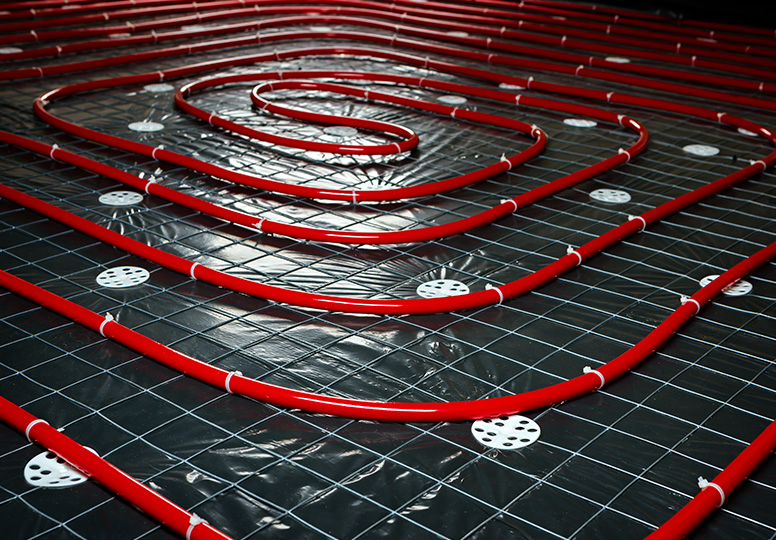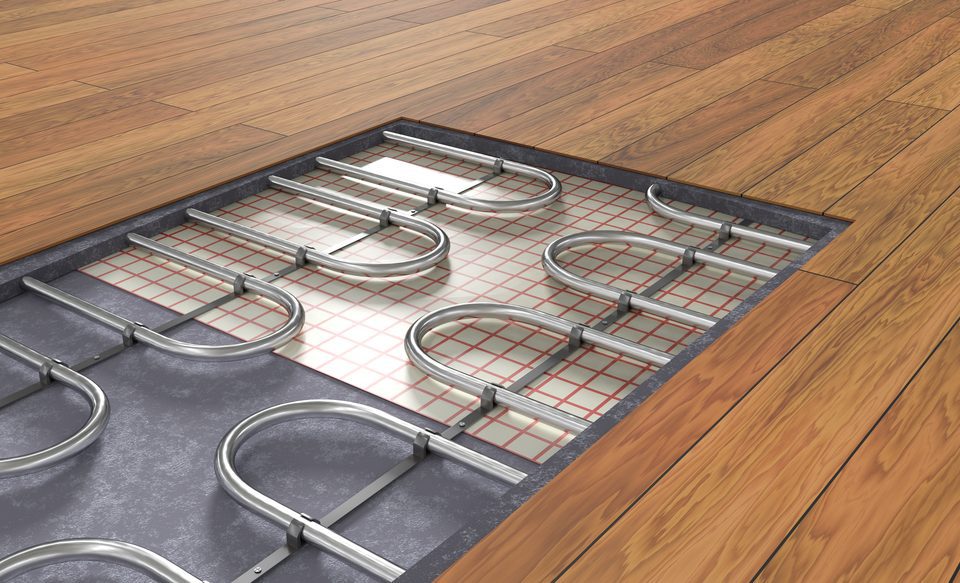Here’s some good news for the ‘gearheads’ out there – convenient, affordable heating is not just for the rooms of your home. Radiant floor heating is a great option even for your garage! In fact, garage radiant floor heating is the best way to warm the floor when you are crawling around underneath your car. In addition, it also dries the floor and warms the air throughout the garage, keeping the space comfortable and preventing stored items from danger of mold and mildew.
If you are tired of scooting around on cold concrete while you undertake projects on your hot rod or family car, garage radiant floor heating is a sensible option. Plus, these systems are quiet, unlike space heaters or electric blowers. Listen to your favorite music or easily carry on a conversation with your workmates or family while you stay warm and dry.
If you are ready to vastly improve your workspace, here is everything you need to know about garage radiant floor heating and how you can get started installing it in your home garage.
What is Garage Radiant Floor Heating?
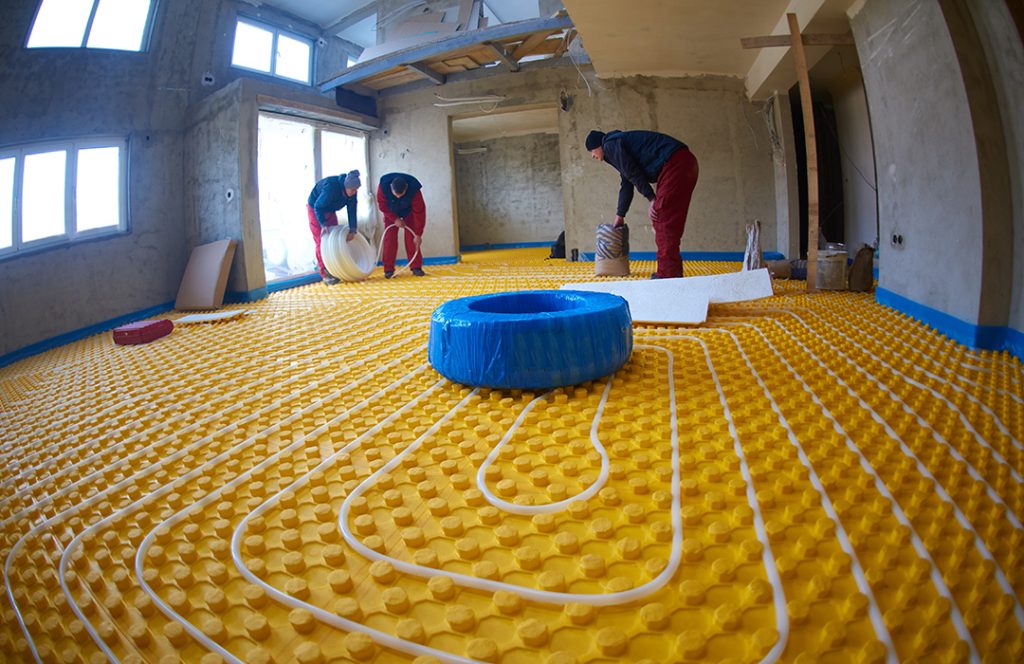
Radiant heating systems supply heat directly to the floor or another surface of your home. These systems take their name from the method of heat transfer — heat radiates from the system components through the surface and into the air via infrared radiation. Think of how a stovetop heats up and you feel the heat as you draw nearer to the stove. Radiant floor heating embeds the heating system components within the floor of a space, including your garage.
Radiant heating is a more efficient means of heating any space. There is no heat loss through ductwork, and it heats much more evenly than baseboard heaters or forced air heaters normally employed in garages. Also, if you suffer from allergies, radiant heat does not spread allergens through the air. Modern radiant heating systems are energy efficient, and can use different means for spreading heat, as we will examine below.
The most popular types of radiant floor heating use electric components or liquid (hydronic) components that run throughout the floor to spread heat. Each type of system has advantages. Let’s discuss both types.
Electric radiant floors
Typically use electric cables or mats of electrically conductive plastic that are mounted within the floor material or on the subfloor below a floor covering. These are particularly efficient and cost-effective if embedded in a concrete floor that can hold a thermal mass for longer periods of time. Floor coverings, such as tile or hardwood, will not hold the heat as long, making it necessary to heat the floor for longer periods of time.
Most garage floors are concrete, so embedding an electric system into a new garage floor is ideal. For existing floors, a “wet” application is recommended, where the electric cables or mats are laid atop the existing floor and a few inches of new concrete is poured on top.
Hydronic (liquid) systems are the most popular and cost-effective garage radiant floor heating systems available. These innovative systems transfer heated water through a pattern of tubing that is below or within the flooring material. The system can be attached to your existing water heater. Another water heater installed for just this purpose, or another type of boiler.
The tubes are connected to pumps and valves that can control the flow of water with a thermostat to control the room temperature.
How Do I Install Garage Radiant Floor Heating?
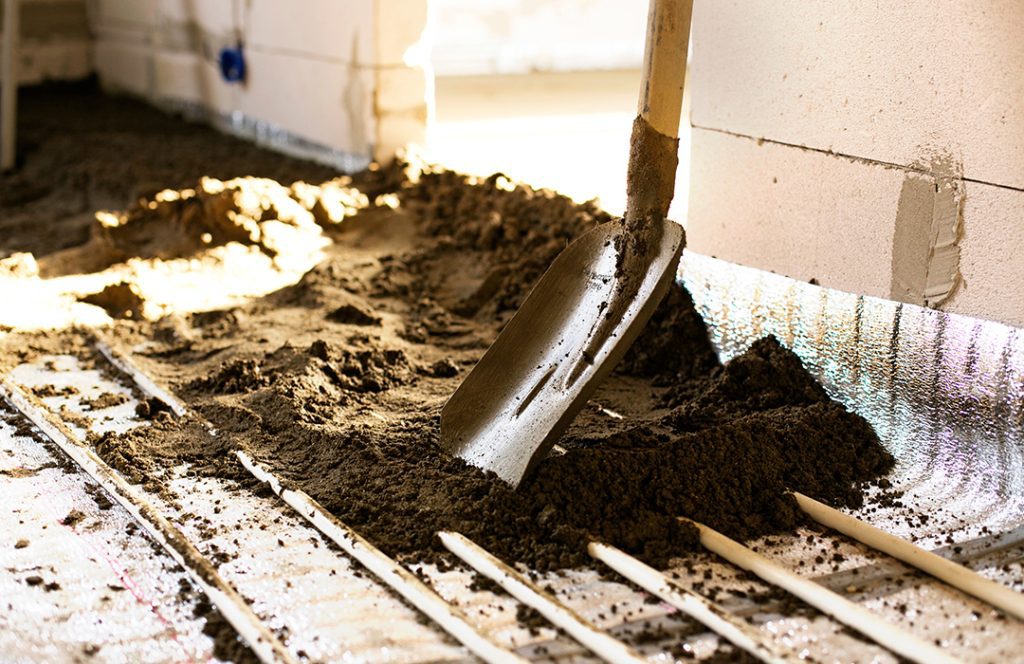
Both electric and hydronic garage radiant floor heating systems can be installed in two ways. If you are constructing a new garage, the best way is to install the system within the concrete floor itself. The electric components or liquid tubing channels are connected to the strengthening rebar or wire mesh for an efficient, high-mass installation. Then, concrete is poured as normal to form the garage floor. The system is connected to an electric and/or hot water source and thermostat for temperature control.
Garage radiant floor heating within the concrete slab warms the slab and the ambient air above. Providing a comfortable temperature as well as a dry, warm surface for lying underneath your vehicle while working. We would recommend installing sufficient insulation in the walls and ceiling of your garage to keep the heat within the garage and prevent loss and higher electricity bills.
For existing garage floors, the electric mats or liquid tubing can be laid down in a pattern over the floor, then overpoured by a layer of gypsum or concrete. The garage radiant floor heating components are not large and will not require more than two or three inches of additional material. This will not raise your garage floor a considerable amount and should still allow sufficient clearance for vehicles. Be sure to measure your garage height before choosing this installation method.
With this type of installation, the electric and/or liquid components are then connected to a water heater and thermostat for temperature control. Insulating your garage walls and ceiling will improve the efficiency of the system and save you money.
How Efficient is Garage Radiant Floor Heating?
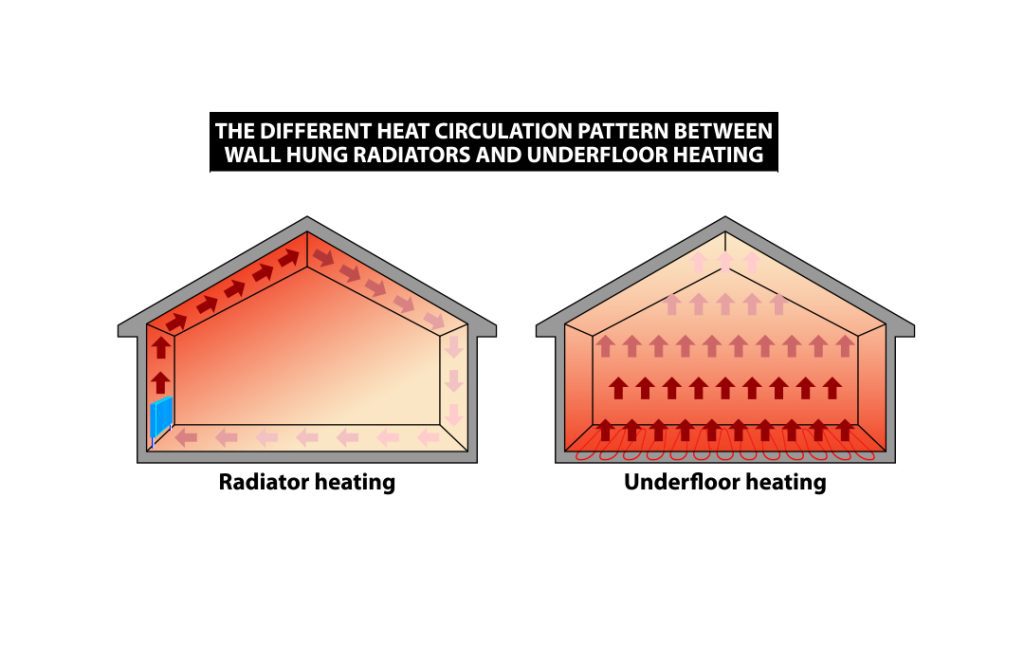
Both electric and liquid garage radiant floor heating are very efficient methods of providing a warm and dry storage and workspace. They typically use as much or less energy than other common heating systems, like forced air or space heaters.
Depending on your installation type and the size of your garage. You can generally assume that your heated garage floor system will consume about 12 watts of energy per square foot for each hour of use. This means a 100 square foot garage space would use 1200 watts each hour the system was in active operation. This is approximately 300 watts less than the average electric rocket-style space heater.
Moreover, garage radiant floor heating increases the temperature of the space evenly. Space heaters or forced air blower heaters heat the side of the room nearest the heater faster. Making an extremely hot side and a colder side of the room.
Calculating My Garage Floor Radiant Heating Energy Use
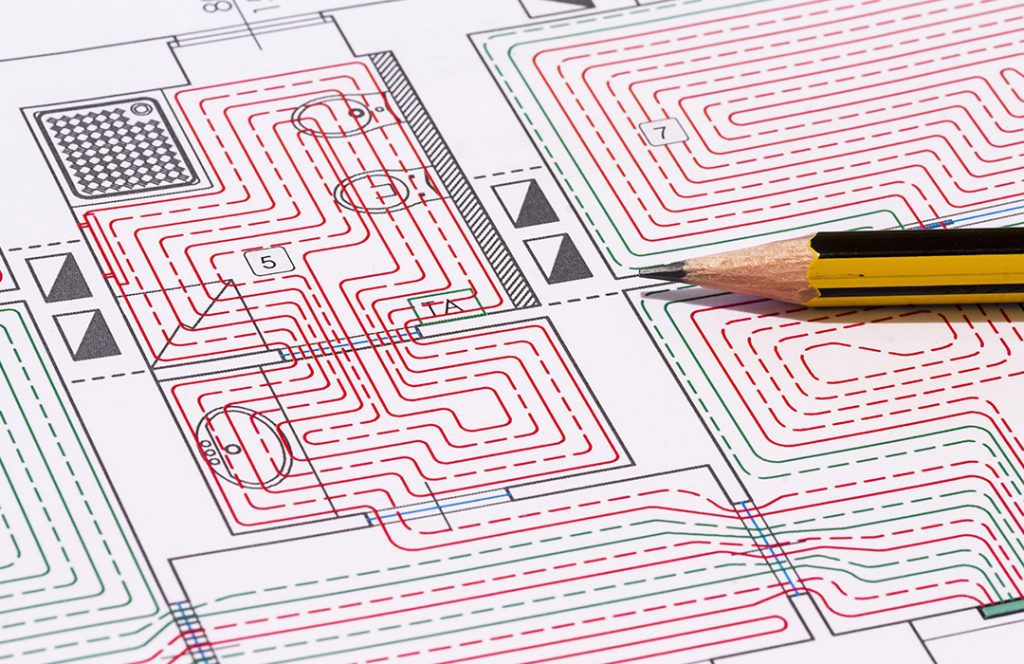
When planning for garage radiant floor heating system installation. You can easily calculate an estimated power usage for the garage space of your home.
Follow these steps to perform your calculations:
- Calculate the square footage of the heated area in your garage space. This is figured by multiplying the square footage of the whole room by 0.9. For example, if the space of the entire room is 100 square feet, 100 x 0.9 = 90 square feet.
- Now multiply this heated area by 12 watts per square foot of energy use. Since most systems use about this much electricity. For example, the 90 square feet of heated area in example is multiplied by 12. Or 90 x 12 = 1080 watts of electricity.
- Because your energy bill is likely computed and charged by kilowatts, you must calculate that amount. Divide the total number of watts by 1000 to get the number of kilowatts the system will use per hour. In our garage example, 1080 watts is divided by 1000, or 1080 ÷ 1000 = 1.08 kilowatts.
- Now, find out how much you are charged per kilowatt in your area. Then multiply that number by how much your garage radiant floor heating system will likely use per hour. The United States average is $13.31 per kilowatt hour. It may be more or less where you live. So, in our garage example, 1.08 kilowatts is multiplied by $13.31, or 1.08 x 13.31 = 14.37. The garage in our example will cost $14.37 per hour to operate.
However, it is important to remember that garage radiant floor heating systems do not operate 24 hours a day.
By including a programmable thermostat in your system installation. You can set a desired temperature and the system will only operate as necessary to maintain that temperature. Further, the system can also be operated only when you plan to use it. Unless you just fancy keeping a warm garage space 24/7, there is no use to keep the system operating constantly.
The programmable thermostat can be set to only operate when the space will be in use. Also, by using a wifi thermostat, you can control the temperature or system from any location. Pull out your smartphone, open the thermostat app, and activate the system to warm the space to a predetermined temperature. So it will be warm and toasty for when you plan to work in the space. This is incredibly convenient as well as a great cost-saving measure.

